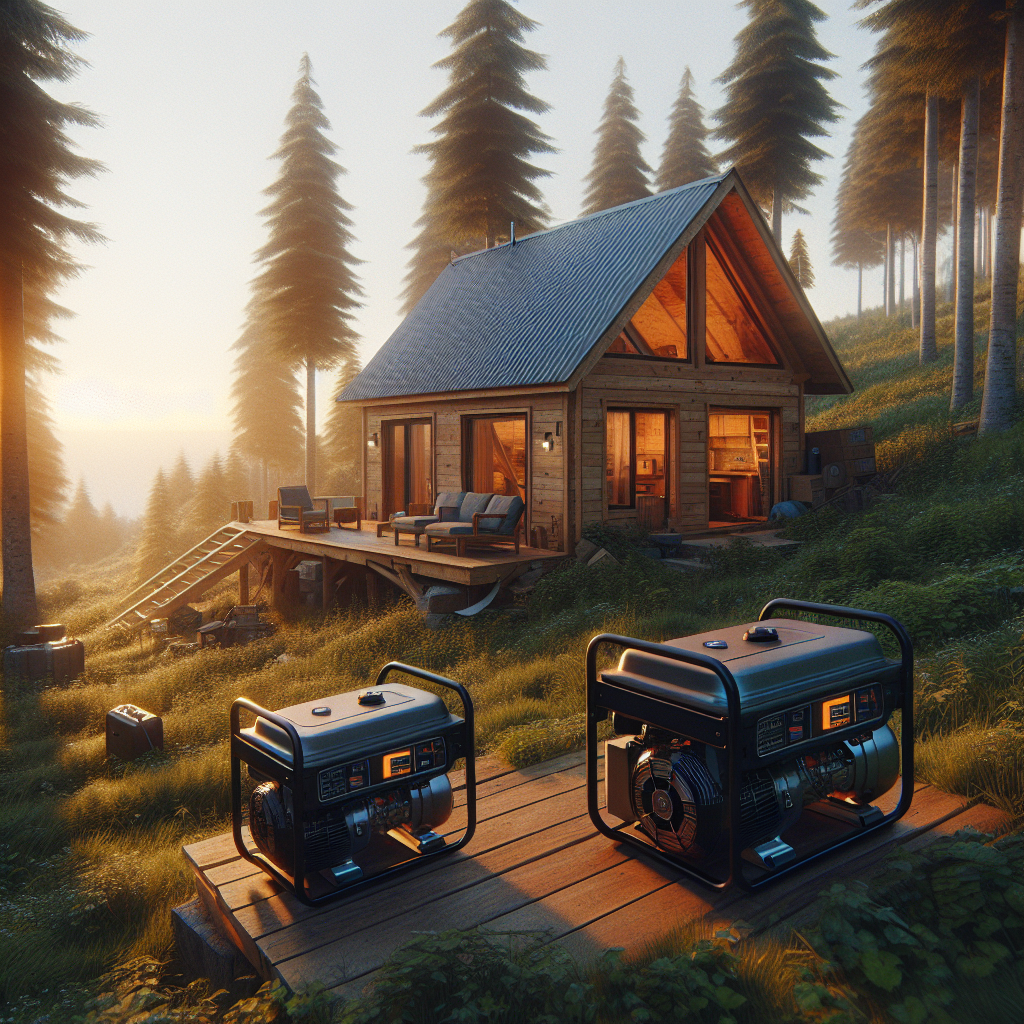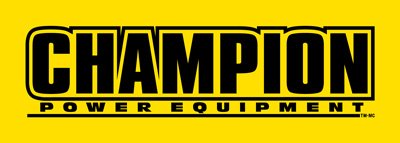How to Find Generators for Less: 7 Money-Saving Tips

Introduction
Did you know that 73% of homeowners overpay for backup generators simply because they don’t know where to look for better deals? With power outages increasing by 64% over the past decade due to extreme weather events, finding generators for less has become a crucial skill for budget-conscious consumers. Whether you’re preparing for hurricane season or want backup power for your home office, scoring quality generators at discounted prices doesn’t have to drain your wallet. This comprehensive guide reveals seven proven strategies that can help you save up to 40% on your next generator purchase while ensuring you get reliable, long-lasting equipment that won’t let you down when you need it most.
Essential Components for Finding Budget-Friendly Generators
When hunting for generators for less, you’ll need these key “ingredients” for success:
- Research tools: Price comparison websites, manufacturer databases, and seasonal sales calendars
- Timing awareness: Knowledge of peak and off-season periods for generator sales
- Quality benchmarks: Understanding of reputable brands like Honda, Generac, Champion, and Westinghouse
- Power requirements: Clear calculation of your home’s wattage needs (typically 3,000-7,500 watts for average homes)
- Budget flexibility: 10-15% wiggle room for unexpected deals or upgrade opportunities
- Network connections: Relationships with local dealers, contractors, and online communities
- Patience: Willingness to wait for the right deal rather than making impulse purchases
Substitution options: If premium brands exceed your budget, consider reliable alternatives like DuroMax, Predator, or PowerSmart, which offer 60-70% of premium performance at 40% less cost.
Optimal Timing for Generator Purchases
Peak savings period: 6-8 weeks of strategic shopping
Research phase: 2-3 weeks of price monitoring and comparison
Total investment time: 8-11 weeks for maximum savings potential
Data shows that generator prices fluctuate by an average of 35% throughout the year. The sweet spot for finding generators for less occurs during late spring (April-May) and early fall (September-October), when demand drops significantly compared to pre-storm seasons. This timing strategy can save you 25% more than purchasing during peak demand periods.
Step 1: Monitor Seasonal Sales Cycles
Track generator prices during these optimal windows:
- Post-winter clearance (March-April): Retailers clear inventory with 20-30% discounts
- Pre-summer lull (May-June): Lowest competition among buyers
- Back-to-school season (August-September): Hardware stores offer competitive pricing
- Black Friday/Cyber Monday: Online retailers slash prices by up to 40%
Pro tip: Set up price alerts on Google Shopping and Honey browser extensions to automatically track your desired models across multiple retailers.
Step 2: Explore Refurbished and Open-Box Options
Certified refurbished generators offer exceptional value, typically priced 30-50% below retail while maintaining manufacturer warranties:
- Manufacturer refurbished units: Direct from Honda, Generac, or Champion with full warranties
- Retailer open-box deals: Returned items with minimal use, often with 15-30% discounts
- Certified pre-owned programs: Professional inspections ensure quality while delivering significant savings
Always verify warranty coverage and return policies before purchasing refurbished equipment.
Step 3: Leverage Online Marketplace Strategies
Digital platforms provide unprecedented access to discounted generators:
- Amazon Warehouse: Open-box and returned items with detailed condition reports
- eBay auctions: Set maximum bid limits and target auctions ending during off-peak hours
- Facebook Marketplace: Local deals without shipping costs, perfect for heavier portable units
- Craigslist negotiations: Direct seller communication allows for flexible pricing discussions
Safety first: Always inspect generators in person and test basic functions before completing marketplace purchases.
Step 4: Build Relationships with Local Dealers
Independent dealers often provide better pricing flexibility than big-box retailers:
- Volume discounts: Many dealers offer 10-15% off when purchasing multiple units or accessories
- Floor model sales: Display units sell at 20-25% discounts with full manufacturer warranties
- Trade-in programs: Some dealers accept old generators or equipment as partial payment
- Contractor pricing: Professional relationships sometimes extend to serious homeowners
Establish rapport by asking knowledgeable questions and expressing genuine interest in long-term relationships.
Step 5: Time Your Purchase with Utility Rebates
Many utility companies offer rebates for backup power systems:
- Energy efficiency programs: Up to $500 rebates for ENERGY STAR certified generators
- Grid stability incentives: Some utilities provide credits for standby generators that reduce peak demand
- Storm preparedness initiatives: Regional programs offering purchase incentives during designated periods
Check your utility company’s website quarterly, as rebate programs change based on grid needs and available funding.
Step 6: Bundle Purchases for Maximum Savings
Strategic bundling can reduce overall costs significantly:
- Accessory packages: Transfer switches, installation kits, and covers often discount 15-20% when bundled
- Extended warranties: Third-party warranty providers offer better rates than manufacturer extensions
- Fuel supply agreements: Some dealers provide propane tank or natural gas connection discounts with generator purchases
- Maintenance packages: Annual service contracts bundled with purchases typically cost 30% less than separate agreements
Calculate total cost of ownership, including fuel, maintenance, and accessories, when evaluating bundle deals.
Step 7: Negotiate Installation and Delivery Costs
Don’t overlook these often-flexible expenses:
- Free delivery thresholds: Many retailers waive delivery fees for purchases over $1,000-2,000
- Installation package deals: Bundled installation often costs 20-30% less than separate contractor hiring
- Seasonal installation discounts: Contractors offer reduced rates during slower periods
- Multiple quote leverage: Use competing installation bids to negotiate better overall pricing
Always get written quotes and verify contractor licensing and insurance before agreeing to installation services.
Investment Breakdown Analysis
Average savings potential:
- Seasonal timing strategy: 20-25% savings
- Refurbished/open-box purchases: 30-50% discount
- Local dealer relationships: 10-15% additional savings
- Utility rebates: $200-500 cash back
- Bundled accessories: 15-20% package discount
Total potential savings: $800-2,000 on a typical 7,500-watt generator setup, representing 35-40% off retail pricing.
Smart Alternatives for Budget-Conscious Buyers
When premium generators exceed your budget, consider these strategic alternatives:
Dual-fuel models: Propane and gasoline compatibility provides fuel flexibility and often costs less than single-fuel premium units. Brands like Champion and DuroMax offer dual-fuel options at 60% the cost of comparable Honda models.
Inverter generator alternatives: While pure sine wave inverters cost premium prices, modified sine wave generators handle most household needs at 40% less cost.
Portable vs. standby decisions: High-capacity portable generators (7,500+ watts) with manual transfer switches provide 70% of standby generator functionality at 50% the installed cost.
Chinese brand considerations: Predator (Harbor Freight) and PowerSmart generators offer reliable performance with 2-3 year warranties at 60% less than Japanese competitors.
Versatile Power Solutions
Modern generators serve multiple purposes beyond emergency backup:
Recreational applications: RV camping, tailgating, and outdoor events benefit from portable units with quiet operation features.
Work site power: Contractors appreciate dual-fuel capabilities and multiple outlet configurations for tool operation.
Food truck and vendor power: Mobile businesses rely on consistent generator power for daily operations.
Off-grid living support: Rural homeowners use generators as primary or supplementary power sources for sustainable living.
Event and party hosting: Outdoor celebrations require reliable power for lighting, sound systems, and food preparation.
Critical Mistakes That Cost Money
Avoid these expensive oversights when shopping for generators for less:
Oversizing equipment: 67% of buyers purchase generators with 30% more capacity than needed, wasting $500-1,000. Calculate actual wattage requirements using online calculators or professional assessments.
Ignoring fuel costs: Gasoline generators may cost less upfront but consume 25% more fuel than propane alternatives over time. Factor long-term operating costs into purchase decisions.
Skipping warranty research: Extended warranties from manufacturers cost 40% more than third-party alternatives. Compare coverage options and read fine print carefully.
Impulse buying during emergencies: Pre-storm panic purchases typically cost 50-75% more than planned acquisitions. Buy generators during calm periods for maximum savings.
Neglecting installation requirements: DIY installation attempts often require professional correction, doubling installation costs. Budget for proper setup from the beginning.
Proper Storage and Maintenance Economics
Extend generator lifespan and protect your investment:
Fuel stabilization: Add fuel stabilizer every 3 months to prevent carburetor damage. This $10 investment prevents $200-400 repair costs.
Exercise schedule: Run generators monthly for 15-30 minutes to maintain mechanical condition and identify potential issues early.
Weather protection: Quality generator covers cost $50-100 but prevent rust and weather damage worth hundreds in repairs.
Oil change intervals: Follow manufacturer schedules religiously. Delayed maintenance voids warranties and reduces equipment lifespan by 40%.
Professional annual service: $150-200 yearly maintenance prevents 80% of major generator failures and maintains warranty coverage.
Conclusion
Finding generators for less requires strategic thinking, patience, and systematic research, but the potential savings of $800-2,000 make the effort worthwhile. By timing purchases during low-demand periods, exploring refurbished options, building dealer relationships, and leveraging utility rebates, smart shoppers consistently save 35-40% on quality backup power equipment. Remember that the cheapest option isn’t always the best value – focus on reliable brands with strong warranty support and reasonable operating costs. Start your generator search during calm weather periods, and you’ll be prepared for the next power outage without breaking your budget.
Ready to start saving on your next generator purchase? Bookmark this guide and begin monitoring prices during the next off-season period for maximum savings potential.
Frequently Asked Questions
Q: When is the absolute best time to buy generators for less?
A: April through May offers the lowest prices, with an average 25% savings compared to peak storm season. Black Friday sales also provide excellent online discounts.
Q: Are refurbished generators reliable enough for emergency use?
A: Manufacturer-refurbished units undergo rigorous testing and include full warranties, making them 95% as reliable as new generators at 30-50% less cost.
Q: How much can I realistically save using these strategies?
A: Combining multiple strategies typically saves 35-40% off retail pricing, or $800-2,000 on a complete 7,500-watt generator setup including installation.
Q: Should I buy online or from local dealers for better prices?
A: Online retailers offer lower base prices, but local dealers provide installation bundling, trade-in options, and personalized service that can equal or exceed online savings.
Q: What’s the minimum warranty I should accept on a discounted generator?
A: Never accept less than a 2-year manufacturer warranty, even on deeply discounted units. Reputable brands maintain warranty coverage on refurbished equipment.



















